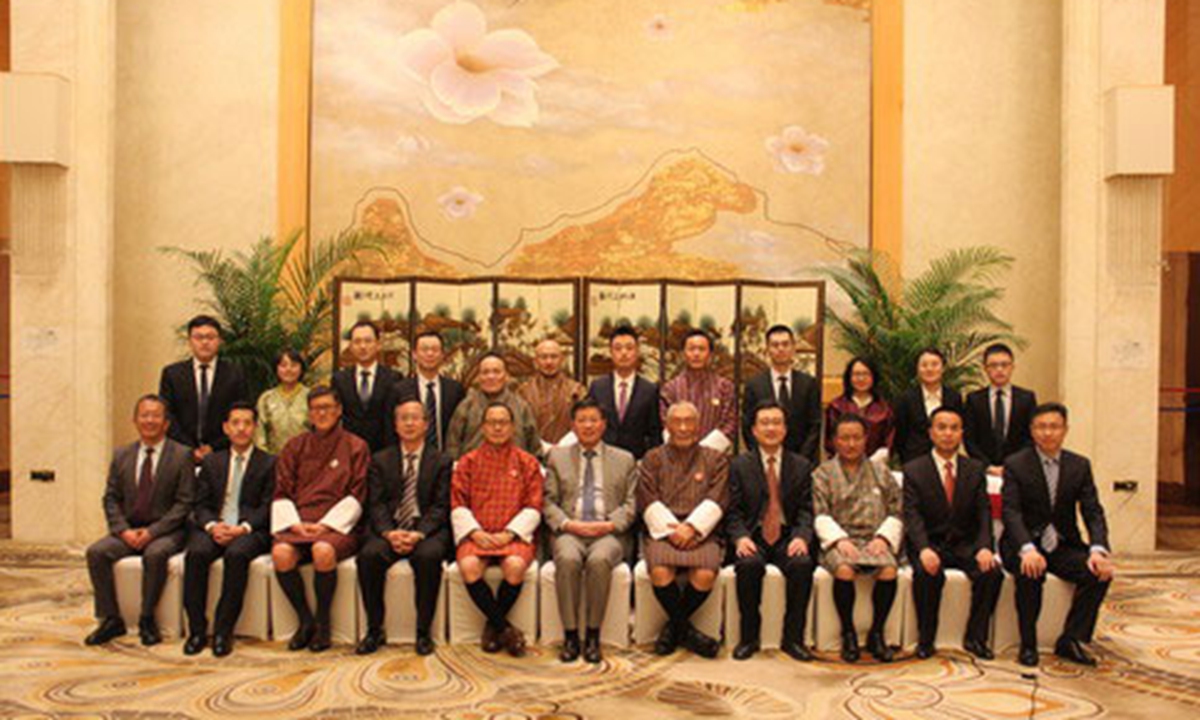
Editor's note: CGTN's First Voice provides instant commentary on breaking stories. The daily column clarifies emerging issues and better defines the news agenda, offering a Chinese perspective on the latest global events.
For the past week, news stories have been claiming that, stealthily but steadily, Beijing is building whole towns across internationally recognized borders.
They are all based on an article in the Foreign Policy magazine that makes an astonishing series of claims about China's construction near its border with Bhutan.
The author of the article, Robert Barnett, is a scholar who for years has tried to undermine the legitimacy of China's presence in Tibet.
News of the construction of the Chinese villages is neither stealthy nor secretive.
However, the Foreign Policy article claims, with the precision of a dossier compiled by a foreign intelligence agency, that China has built three new villages, 106 kilometers of new roads, a small hydropower station, two administrative centers for the Communist Party of China, a communications base, a disaster relief warehouse, five military or police outposts, and "what are believed to be a major signals tower, a satellite receiving station, a military base, and up to six security sites and outpost in what it says are parts of Lhodrak in the TAR but which in fact are in the far north of Bhutan."
It is unclear how Barnett can assert so clearly these villages are "in fact" in Bhutan.
Bhutan has not made such claims. The country has lodged no complaints with China about the alleged border incursions. In fact, officials from both sides met last month for the 10th China-Bhutan expert group meeting on boundary issues in Kunming, southwest China's Yunnan Province.
The in-depth and fruitful discussions on the boundary issue were held in a warm and friendly atmosphere. The two countries agreed to hold a 25th round of China-Bhutan boundary talks and an 11th meeting of the expert group on the boundary issue.

The 10th China-Bhutan expert group meeting on boundary issues was held in Kunming, southwest China's Yunnan Province, from April 6 to 9, 2021. /Screenshot from website of Chinese Ministry of Foreign Affairs
The 10th China-Bhutan expert group meeting on boundary issues was held in Kunming, southwest China's Yunnan Province, from April 6 to 9, 2021. /Screenshot from website of Chinese Ministry of Foreign Affairs
More starkly, last year, Bhutan's Ambassador to India, Major General V. Namgyel, told India's NDTV, "There is no Chinese village inside Bhutan." The ambassador added, "As for 'Google lines' on the map, Bhutan and China do not negotiate based on 'Google Map' but claim lines based on detailed cartographic maps and ground features. Each side has its own maximalist claim lines."
India, which has historically controlled Bhutan's foreign policy, has not publicly claimed that the villages are in Bhutan.
However, analysts said that India stands in the way of a border deal between Bhutan and China. India has its own border disputes with China and may not want to see the border with Bhutan settled in a way that could strengthen China's hand.
The claim seems to come from Barnett himself, or those who helped him write this article, perhaps the "two Tibetan researchers who asked to remain anonymous as part of an ongoing collaborative research project into policy developments on Tibet" credited at the end of the article.
Whether those researchers represent the interests of India or an even more powerful country that seeks to contain China's rise is impossible to know.
The magazine admits it received no response from the Chinese or Bhutanese governments and the Indian government said it had no comment.
This very professionally plants bits of disinformation, hyped by the Western media, and feeds into rising nationalist sentiments in India and the U.S. that aims to paint China as a threat.
The article aims to drive a wedge between Bhutan and China, and inflame Indian and even Bhutanese public sentiments against China. This would support India's goal of becoming a hegemonic power in South Asia, maintaining its historic control over Bhutan and stopping the small country's efforts to assert its own foreign policy.
As the professional purveyors of disinformation know, a lie will go round the world while truth is pulling its boots on.
Although the claims in this article are easily refuted, we can expect them to pop up soon as talking points in the speeches of politicians trying to advance their careers and scare their constituents by using the China threat as a bogeyman.
China has not built villages on Bhutanese territory, and the two nations' friendly, steady efforts to resolve border disputes amicably will continue despite sabotage efforts by self-interested outsiders that prefer chaos to peaceful development.
(If you want to contribute and have specific expertise, please contact us at opinions@cgtn.com.)

